
The City of the Dreaming Spires still casts a binding spell
[caption id="Oxford_img1" align="alignleft" width="406"]
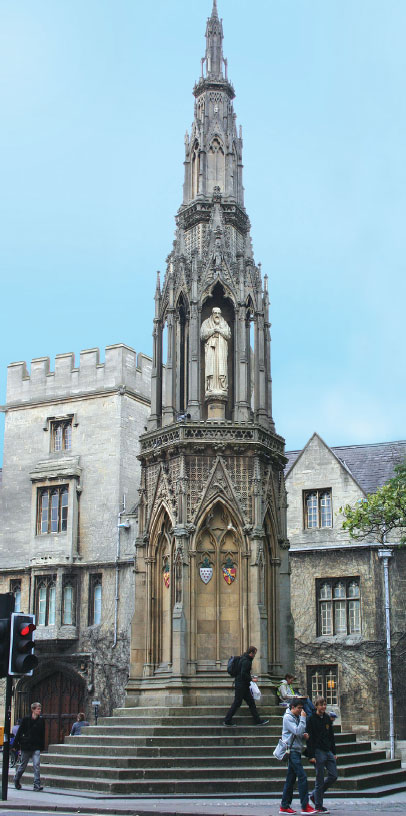
DANA HUNTLEY
Oxford. If anywhere in Britain embodies our “Here Lived History” theme, it is impossible not to think first of Oxford. And the Oxford we think of is the city of the oldest university in the country. Its first colleges date from the 1200s, and sprang out of the many religious foundations that had established houses in the city.
Over the centuries the colleges of Oxford University have been home to legions of scientists, scholars, theologians, peers and writers, as well as 26 prime ministers and 27 Nobel prize winners. It has hosted the Royal court and educated heads of state from around the world. Today, there are 38 self-governing colleges in the university, spread across a city of 150,000. On any visit to the City of the Dreaming Spires, you are bound to follow the footprints of famed and historically significant ghosts by the score.
GETTING TO OXFORD
NO ROAD IS BETTER TRAVELED than that between London and Oxford. These days, that’s the M40. Without diversions or stops along the way, it is no more than an hour from the M25–add another half from Heathrow or Central London.
Travel time is about the same by rail from London Paddington, depending on the train. Trains run at least every hour, and Oxford’s station is but a few minutes’ walk from High Street–making Oxford a convenient day trip from London. Take care as a pedestrian; as you will quickly see, students and dons alike travel the city by bicycle.
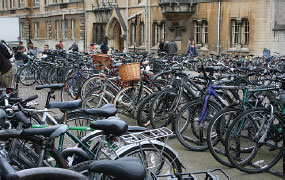
DANA HUNTLEY
WHERE TO START
CARFAX TOWER at the top of High Street makes a convenient landmark to begin. Climb the tower for magnificent views over the city and those dreaming spires of the ancient university. The Tourist Information Centre is on Broad Street, two blocks north and around the corner, for local maps, directions, brochures and current events.
Assuming you don’t have three days or more to devote to Oxford, it’s a matter of making hard choices. A terrific introduction to Oxford’s history, though, begins with a visit to Christ Church College and its chapel, Oxford’s cathedral. In the college refectory (filmed in Harry Potter), the hall’s walls are lined with portraits of famous Christ Church men–most recently, poet W.H. Auden.
[caption id="" align="aligncenter" width="584"]
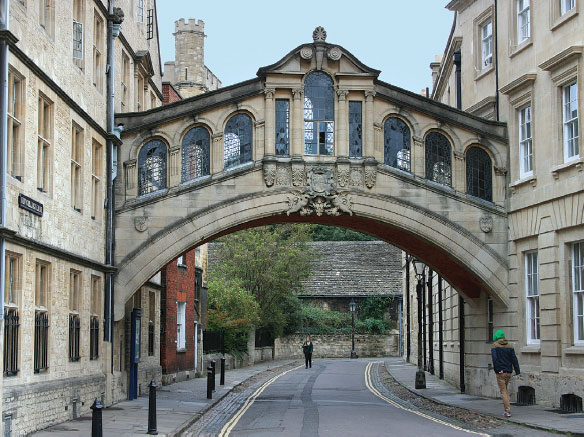
DANA HUNTLEY
EXPLORING THE HEART
ON A HIGH STREET walk toward the river, take a look in at historic St. Mary’s University Church. Farther down, Magdalen College, like most of the ancient colleges, is open for visitors many afternoons. Each has its stories to tell and its famous alumni.
On the banks of the River Cherwell adjacent to Magdalen, hire a punt and pick up a straw boater to wile away an hour on the gentle river. Across the street spreads Oxford’s Botanic Garden and Christ Church Meadow.
Between the High and the Broad, visit Oxford’s Covered Market, with rows of eclectic, colorful stalls (a great place to forage a picnic lunch). Or pay a call for lunch or refreshments at the Turf Tavern, haunt of the fictional Morse and his friend Lewis, tucked behind the Bridge of Sighs. Another favorite is always the Eagle & Child on St. Giles, pub home of C.S. Lewis and the Inklings.
The Ashmolean Museum on nearby Beaumont Street is the oldest university museum in the world, show-casing treasures of art and archaeology from across the globe. Just a few blocks away are the superb Museum of Natural History and the adjacent Pitt Rivers Museum, whose atmospheric collections and displays of cultural anthropology have few peers. All these museums invitingly offer free admission. There are the Bodleian Library, Oxford Castle and the Museum of Oxford, chronicling Oxford’s rich history of town and gown through the centuries, to visit as well.
The day has long gone, of course. It’s easy to see that you can’t begin to see all that Oxford has to offer in a single day, no matter how ambitious. Though the city is compact (everything mentioned can be seen on foot), it definitely pays to do some planning. Admittedly, the best plan is to spend more than one day here.
[caption id="" align="alignleft" width="283"]

DANA HUNTLEY
AFTER HOURS IN OXFORD
OF COURSE, the active university town abounds with pubs and dining options, from fine dining to oriental buffets, Indian cuisine and classic pub fare. Concerts, performance art and lectures feature almost daily. The city also has two first-rate professional theaters, Oxford Playhouse and New Theatre.
[caption id="Oxford_img5" align="aligncenter" width="584"]
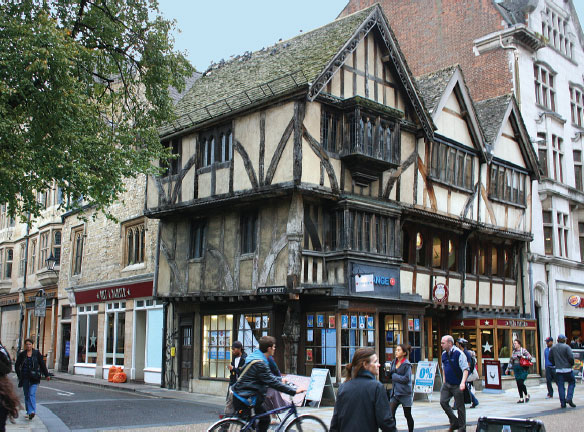
DANA HUNTLEY
IN THE NEIGHBORHOOD
IT’S JUST A FEW MILES up the A44 to the village of Woodstock, nestled just outside the grounds of majestic Blenheim Palace, birthplace of Winston Churchill. The statesman is buried with his family in the churchyard of the adjacent village of Bladon. The road always leads on–from here, commonly to Shakespeare’s Stratford-upon-Avon and the famed castle town of Warwick.





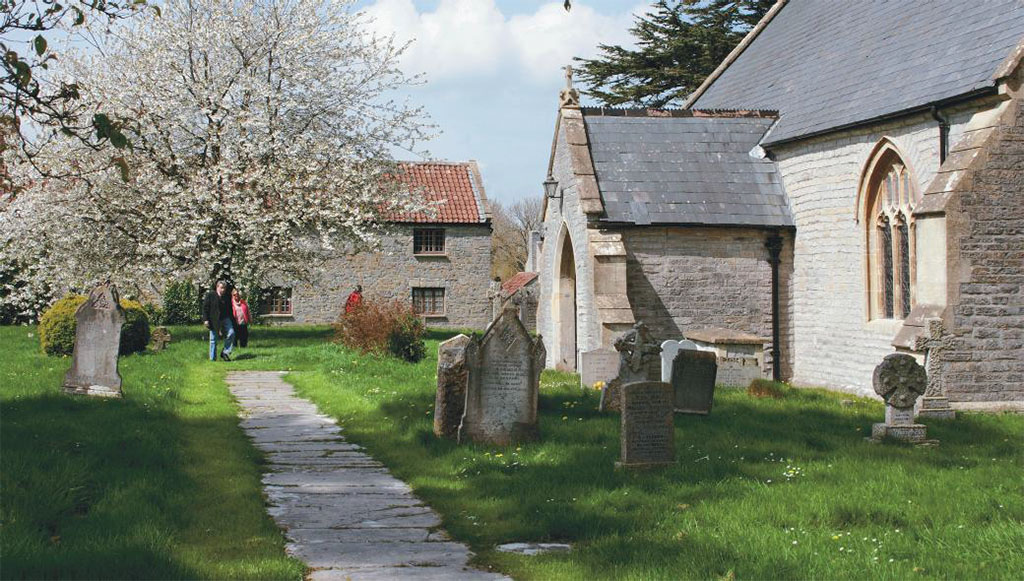



Comments